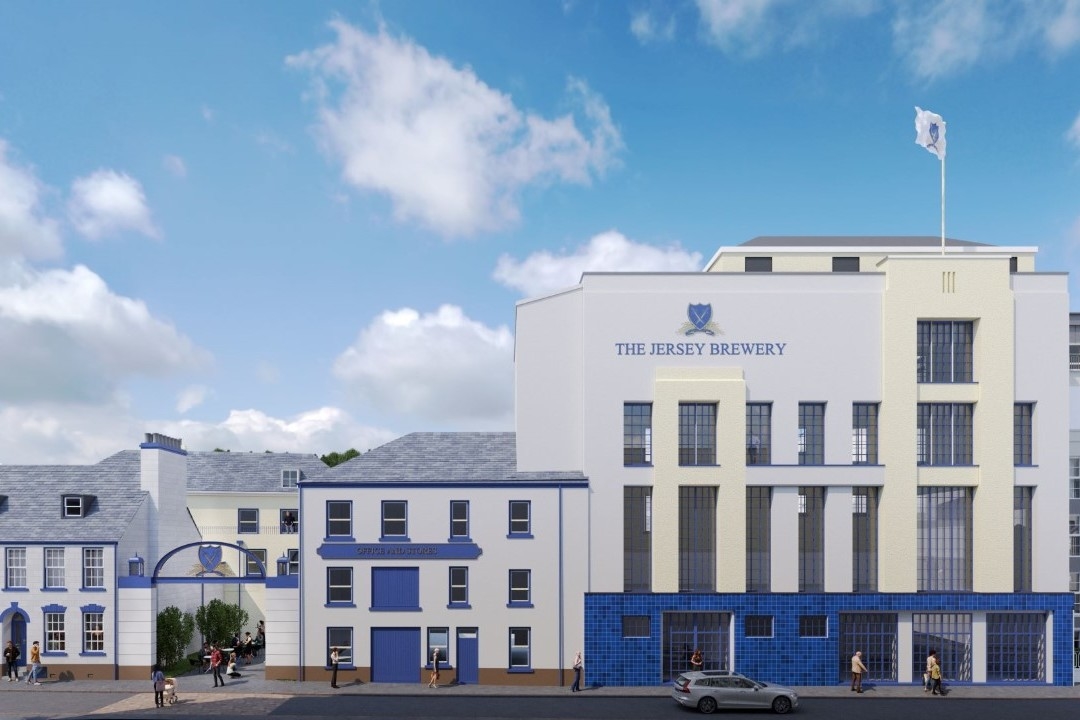PLANS to build more than 260 affordable homes on the Ann Street Brewery site – mainly comprising one- and two-bed properties – do not adequately address the Island’s housing crisis, according to the National Trust for Jersey.
Commenting on the project’s planning application, the organisation said it believed that the proposals should match the requirements identified in the Island’s 2019 Objective Assessment of Housing Need report.
That document highlighted that over 50% of the homes required should be three- and four-bedroom properties.
While the trust criticised the makeup of the units proposed for the Ann Street Brewery site, it welcomed plans to restore a number of listed buildings in the area as part of the project.
Social-housing provider Andium Homes is planning to build 172 one-bedroom, 85 two-bedroom and five three-bed apartments on the site of the former brewery complex, which last produced beer in 2004.
They have also confirmed plans to convert the former Belmont Pub into a café and two apartments.
In a public comment published on the government’s Planning website, the trust said: ‘We note that the proposals still propose a development of mainly one- and two-bed units. We have little confidence that the proposed mix delivers what is required to address the perceived housing crisis in Jersey.’
The comment continues: ‘We would suggest that an exercise be undertaken to match the mix of requirements identified by the Objective Assessment of Housing Needs [report] with the application approvals already granted before any further major residential housing developments are approved, so as to ensure that future development is targeted to build homes which demonstratively satisfy the mix of requirements identified.’
Andium’s application also includes plans to refurbish and repurpose a number of historic listed buildings.
If their proposals are approved, the organisation would turn Sans Souci – a grade-three listed property from the 1820s to the east of the old brewhouse building – into a new centre for the charity Autism Jersey.
‘The rear setting of this historic house was damaged decades ago and the removal of the existing rear extension is welcomed,’ the trust said in its response to the plans.
‘The provision of a rear garden for the property would re-establish a sense of the original setting of the house, but this appears to be unrealistic given the circumstances of this project and the imperative to achieve high-density development.’
The organisation added that a ‘key objective’ of the scheme ‘should be to avoid substantial new buildings dwarfing the existing historic streets’.
‘The retention of additional historic buildings relative to the earlier scheme enables a much more satisfactory relationship to be established between the new buildings and the historic buildings that contribute to the character of the established street scene,’ they said.
‘The retention and refurbishment of the grade-three listed building at No 12 Simon Place is welcomed and we expect this to be refurbished in a way that retains and/or restores features of architectural interest, both internally and externally. The demolition of the rear extension is regretted.’
The eight-storey grade-three listed brewhouse, which still contains its original copper equipment and iron staircase, would be turned into offices as well as a new micro-brewery.
‘We believe it is important that the essence of the existing interior layout and representative elements of the brewing installations are retained and the building is preferably put to a use where a degree of public access is possible,’ the trust said.
‘It is vital that an appropriate balance is struck between the preservation of important features and interior character and the need for a beneficial re-use of the building. We are not satisfied that such a balance has yet been found.’






